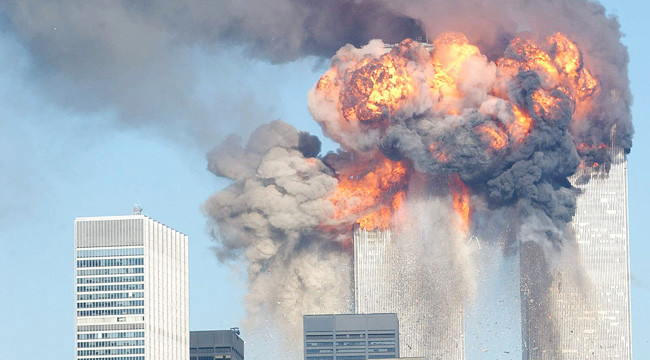
On a Friday afternoon, Congress has made good on its forecast to release the missing portion of the 9/11 files known as the “28 Pages.” Plenty of speculation over these pages has gone down over the years, and a New York Post expose dug deep with attempted and partial interviews. What they found was a pattern of stonewalling by the FBI when questioned about possible Saudi Arabia involvement to the hijackers. Potential sources balked and claimed “diplomatic immunity” regarding who funded the terrorist attacks. This led to assumptions that perhaps the White House didn’t want to jeopardize the U.S.’ alliance with the oil-producing state. A long-lived refusal to declassify the pages only added to the buzz.
Well, the 28 Pages have arrived. Upon their release, White House spokesman Josh Earnest briefed the press and said the pages “show no evidence of Saudi complicity.” Earnest was also confident that the document would only confirm previous administration statements, and no one would find any new evidence.
It’s difficult to find new evidence in a blackout sea, but let’s dig in anyway.
The pages themselves begin with a CIA letter, which recommends that the U.S. develop a counterterrorism strategy that has been lacking prior to 9/11. Then comes an inquiry into the intelligence activities revolving around the terror attack that struck the Pentagon and took down the World Trade Center towers. Some serious finger wagging occurs at the “unacceptable” gap that has existed between the U.S. intelligence community and “limited understanding” of “the Saudi issue.” There’s an explicit mention of how it took a mass tragedy like 9/11 for anyone to dig into the alleged connections between Saudi elite, Saudi intelligence officers, and the hijackers. Before digging into the good stuff, the report adopts a cautious tone:
“It should be clear that this Joint Inquiry has made no final determinations as to the reliability or sufficiency of the information regarding these issues that we found contained in FBI and CIA documents. It was not the task of this Joint Inquiry to conduct the kind of extensive investigation that would be required to determined [sic] the true significance of any such alleged connections to the Saudi Government. On the one hand, it is possible that these kinds of connections could suggest, as indicated in a [redacted] dated July 2, 2002, “incontrovertible evidence that there is support for these terrorists within the Saudi Government.” On the other hand, it is also possible that further investigation for these allegations could reveal legitimate, and innocent, explanations for these associations.”
From there, the pages dive through information on two persons of interest — Omar al-Bayoumi and Osama Basnan — who the U.S. government cleared in 2004 as not being Saudi government agents. However, both were on the FBI radar before 9/11 and received enormous sums of money from Saudi elites. Al-Bayoumi, who had the closest (“solid”) ties to the hijackers, threw a literal welcome party when they arrived in San Diego. The pages detail how he accepted large amounts of money from the Saudi government without evidence of employment. His monetary “allowances” jumped dramatically in late 2000, and he helped the hijackers locate flight schools and arranged for their rent payments and other funding.
Basnan surfaces in portions of the report that are largely redacted (starting on page 18). The pages detail how he received up to $64,000 per month from Saudi elites, and then this excerpt happens:
“The FBI has developed information clearly indicating that Bassnan is an extremist and supporter of Usama Bin Ladin … Bassnan has made many laudatory remarks to FBI assets about Bin Ladin, referring to Bin Laden as the official Kalifate and ruler of the Islamic world. [He] spoke of Bin Ladin “as if he were a god.” Bassnan also stated to an FBI asset that he heard the U.S. Government had stopped approving visas for foreign students. He considered such measures to be insufficient as there are already enough Muslims int he United States to destroy the United States and make it an Islamic state within ten to fifteen years. According to FBI documents, Bassnan also knew Bin Ladin’s family in Saudi Arabia and speaks on his mobile telephone with members of his family.
As the 28 Pages continue, there’s more scolding aimed at the CIA’s lack of concern about these individuals, along with many others. Another section discusses the Saudi government’s lack of cooperation in the investigations. But just as the report starts to roll into deeper territory with a section called “Status of the U.S. Intelligence Community’s Investigation Into Connections Between Terrorism and Saudi Government Officials,” the report goes into blackout mode as shown below.
This, arguably, isn’t the best way to claim no new evidence exists within the 28 Pages. Plenty of information — some already known — appears in these pages, but redaction rules the day.
(Via House.gov)
